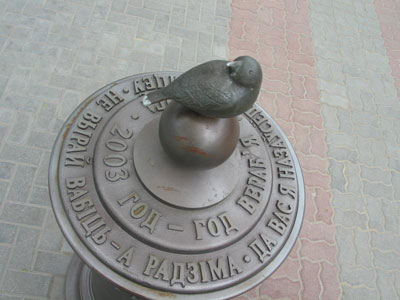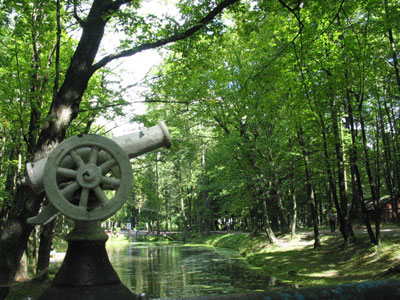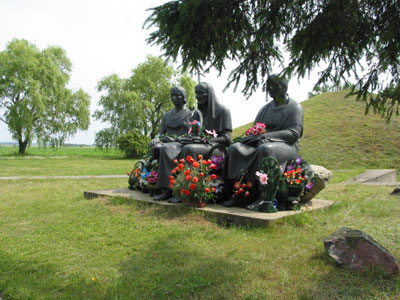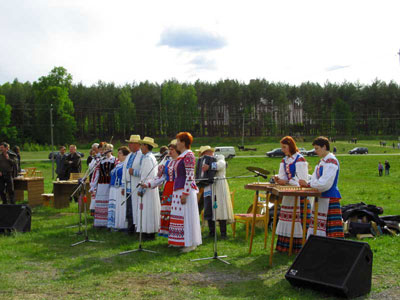Настройки шрифта
Arial
Times New Roman
Межбуквенное расстояние
Стандартное
Увеличенное
Большое
Цветовая схема
Черным
по белому
по белому
Белым
по черному
по черному
The Brest region - western gates of our country
15/03/2013 13:03




The Brest region, western gates of our country, is known far beyond the bounds of Belarus of Brest fortress, Belovezhskaja puscha, trunk-railways and highways connecting Western and Eastern Europe.
The region was formed in 1939 after reunion of Western Belarus and BSSR. In 1954 its borders found new contours owing to joining of several areas of former Baranovichi and Pinsk districts.
In 1967 the Brest region was conferred a decoration upon Lenin order. It was awarded to this worthy tribute for active participation in partisan movement, courage and constancy showed by working-people in the fight against German-fascist invaders during the Great Patriotic War, and for the attainments in reconstruction and development of national economy.
The region is situated in the south-west of Belarus and occupies an area of 32,7 thousand km2. In the west the region borders upon Poland, in the south - upon the Ukraine, Grodno, Minsk and Gomel regions.
Brestchina unites 16 districts: Baranovichy, Brest, Bereza, Gantsevichy, Drogichin, Zhabinka, Ivanovo, Ivatsevichy, Kamenets, Kobrin, Luninets, Ljahovichy, Malorita, Pinsk and Pruzhany districts.
On the territory of the district there are 230 rural councils, 20 cities, 9 urban villages and 2178 rural settlements.
A considerable part of the territory is presented by Belaruskoje Polesje, which was a determinant factor of the economic and cultural development of Brestchina.
The Brest region during a certain period of history was a part of Rzech Pospolita and Russian Empire. Brest was a place of Brest union (1596) and Brest treaty of peace (1918) conclusion.
According to the results of the latest census, the population of the region amounts to 1485,1 thousand people, including 47,2 per cent of men and 52,8 per cent of women.
A frontier location of the region influences the national structure of the population. In Brestchina live representatives of more than 100 nationalities, including Belarusian - 1262,6 - 85 %, Russian - 128,7 - 8,6 %, Ukrainian - 57,1 - 3,8 %, Pole - 27,1 - 1,8 %, Jews - 1,1 - 0,07 %, Tatar - 0,9 - 0,06 %, Gipsy - 0,9 - 0,06 %, Lithuanian - 0,4 - 0,03 %, others - 6,2 - 0,42 %.
The sustainable development of the region is provided mainly for high manufacturing capabilities.
More than 300 industrial enterprises work in Brestchina. They produce goods for the sum of 2 billion dollars annually.
Food industry and woodworking as well as mechanical engineering, metal-working and production of building materials are being developing of advanced rates.
Brest is a unique producer in the republic of gas-stoves under cover of "Gefest", which are well known far beyond Belarus.
The production of Brest electric-bulb plant is unique for the republic. The enterprise has settled the output of electro-illuminating bulbs on the base of progressive modern technologies.
Up to 90 % of republican volume of press-forging equipment, up to 60 % of cotton fabrics, about half of resin-bonded clipboards, a third of hosiery, facing tile and fat cheese, a quarter of knit work and ready-made garments, sugar and a number of other goods, which are highly competitive with world’s analogues on quality and consumer properties, are produced in the Brest region
A quarter of the regional export is provided for free economic zone "Brest". There are 97 residents in the zone, including joint ventures with Russian capital.
A number of tax privileges and customs facilities available in the free economic zone have attracted the attention of business circles from more than 20 countries all over the world.
Since May, 1998 the region is a member of the transboundary union - Euroregion "Bug", which includes Lublin province of Poland and Volynsk region of the Ukraine. A number of perspective projects of ecological orientation, reconstruction and development of railway and motor road’s passages, freight terminal’s building are carried out in the framework of joint cooperation.
The region has a well developed transport infrastructure.
Brest railway junction is one of the first-rate junctions in Central Europe, which ensure transit of Commonwealth of Independent States’ countries with the countries of Western Europe in Moscow and St. Petersburg directions.
A transit corridor "M1/E-30" Berlin-Warsaw-Brest-Minsk-Moscow is of special significance. An extensive network of railways and highways allows carrying out a large quantity of transit cargo transportation through the region (about 80 % of land export of the countries of Commonwealth of Independent States to Western Europe). About 300 thousand vehicles take the international motor road M1/E30 monthly.
Besides Brestchina is primarily an agrarian land. Agricultural organizations provide the population with the agricultural production in full for the date.
Two thirds of meat and more than 70 % of milk are produced in the region. The territory gathered in the harvest million ton of grains owing to diligence and love to earth of countrymen.
Nevertheless the fame of our earth is a fame of its people.
The history of Brestchina piously reveres the memory of people which greatly influenced national and world culture. Tadeush Kostjushko, Kazimir Lyshchinski, Kastus Kalinovskij, Jakub Kolas.
The region is proud of its contemporaries: twice time first Hero of the Soviet Union - Gritsevets S.I., the first Belarusian cosmonaut twice hero of the Soviet Union - Klimuk P.I., the first Hero of the Republic of Belarus - Karvat V.N.